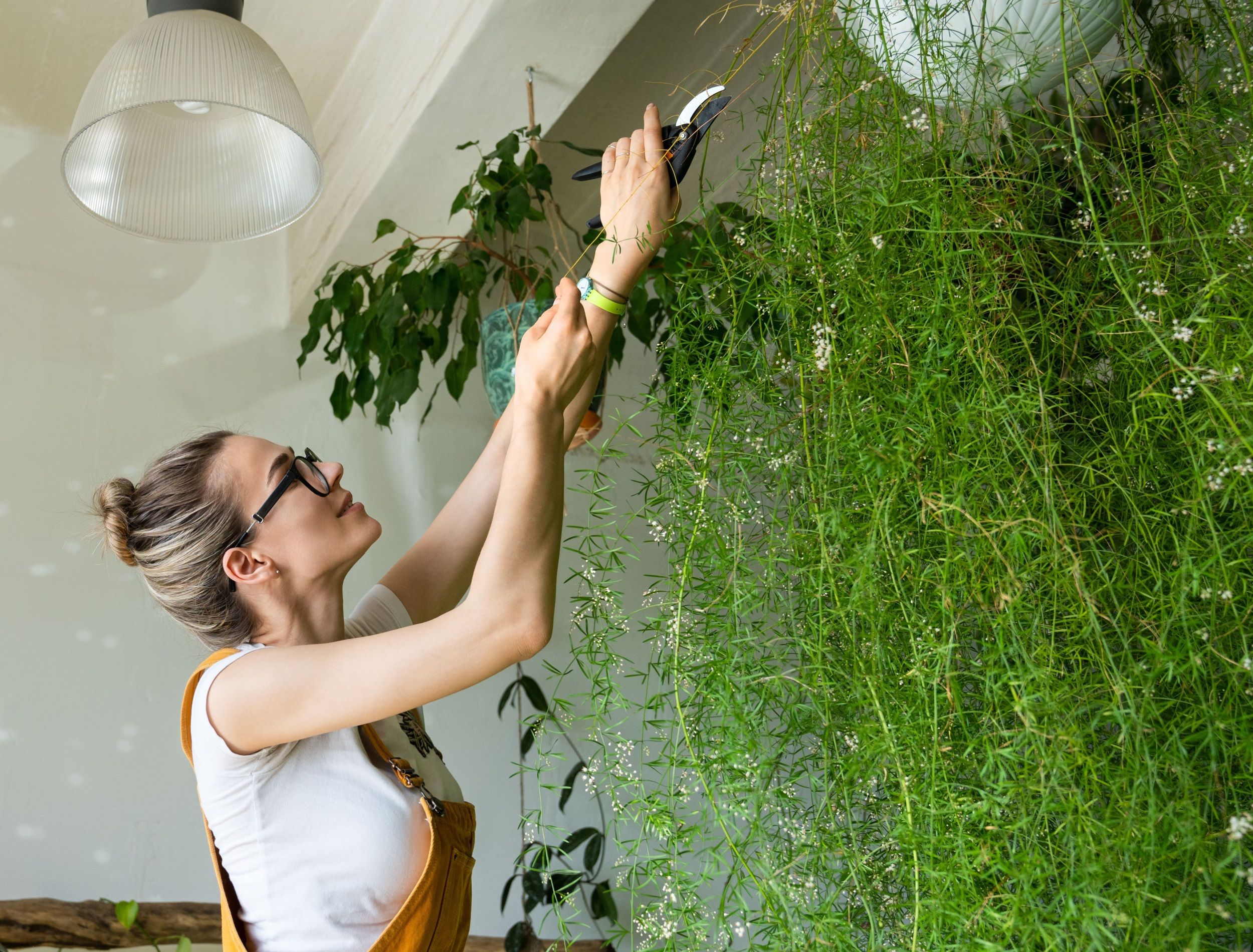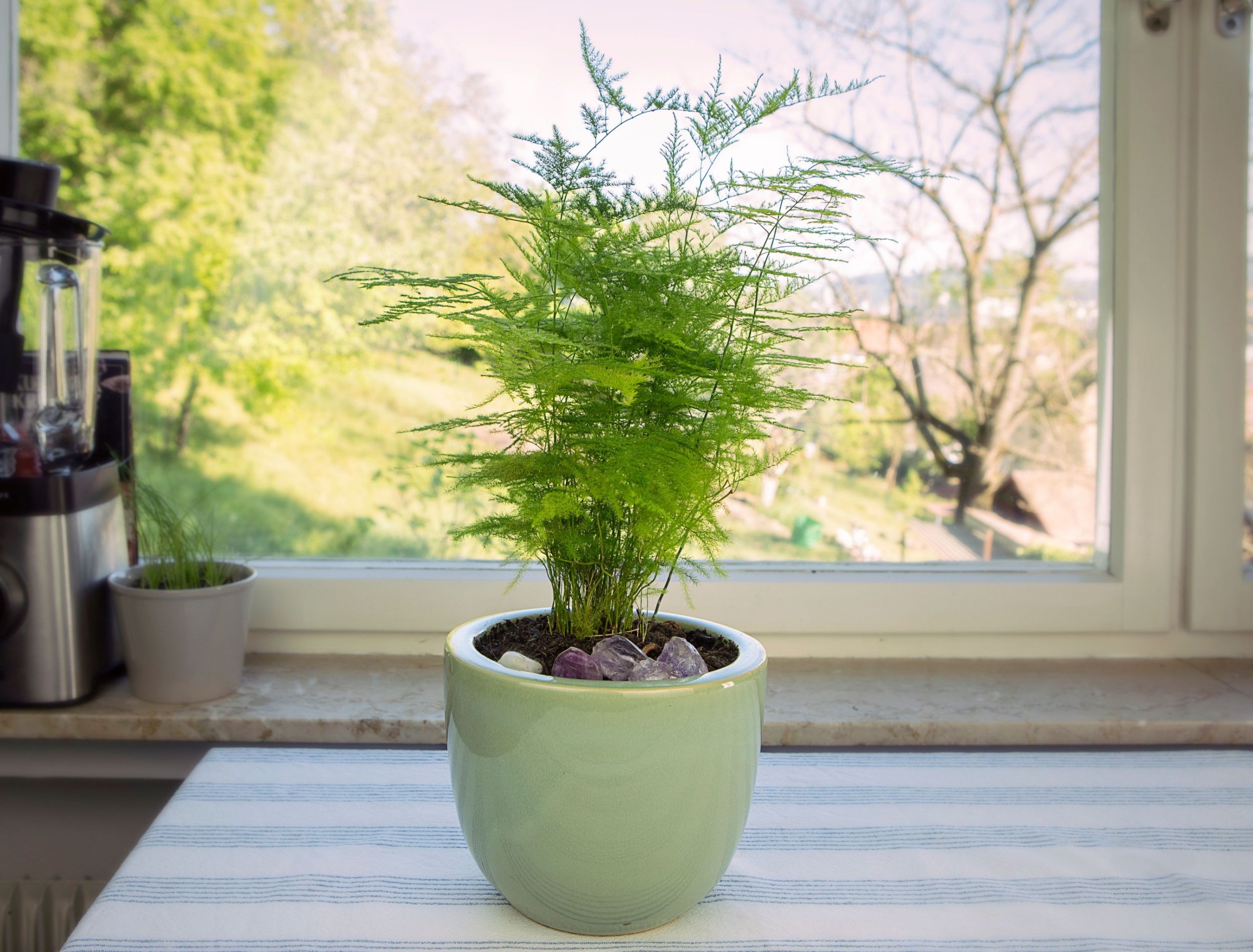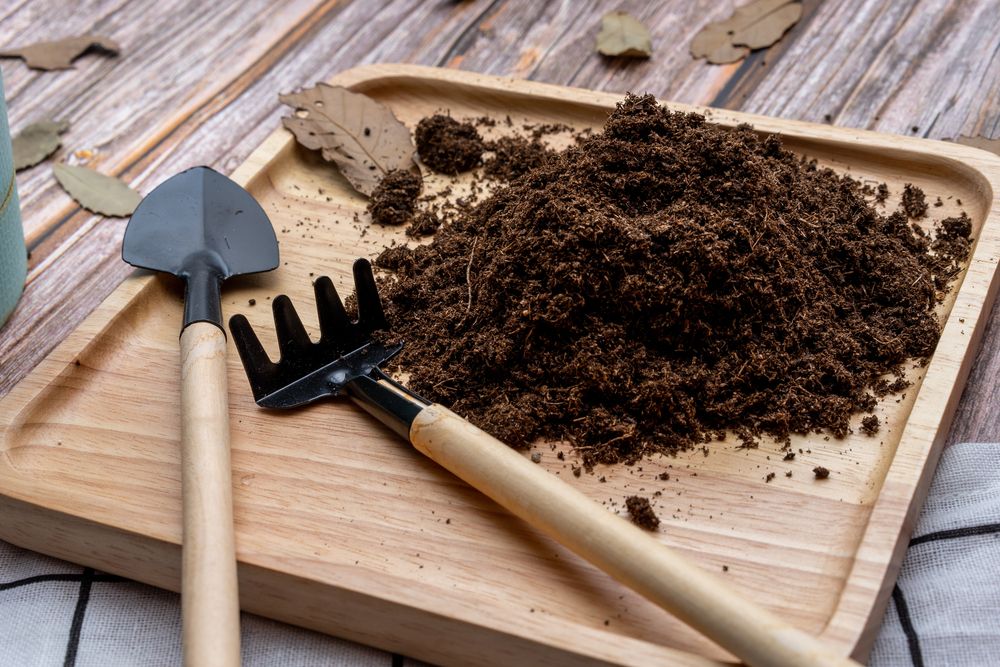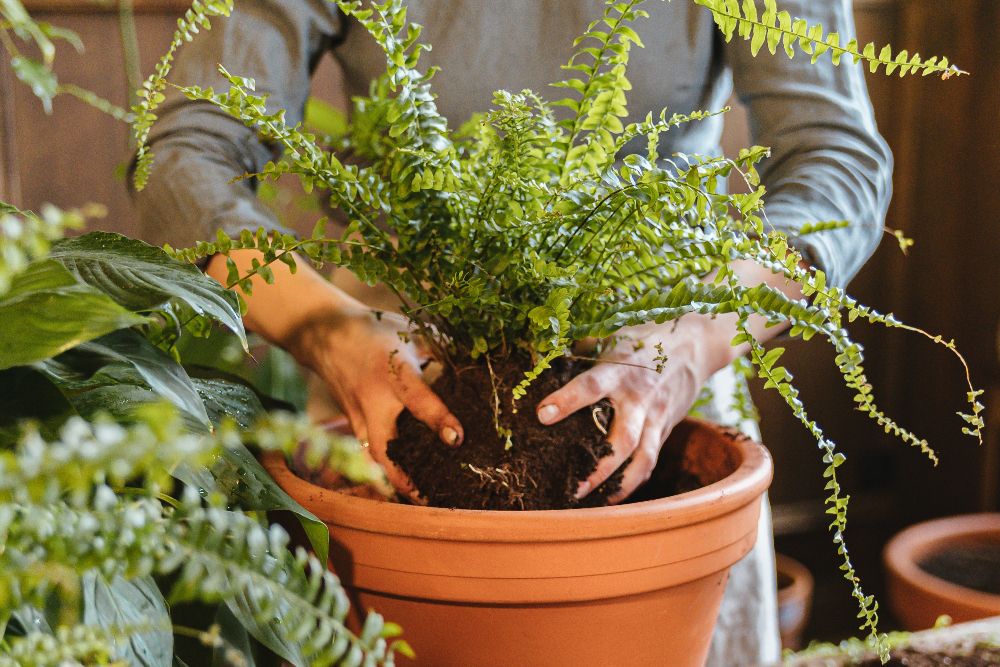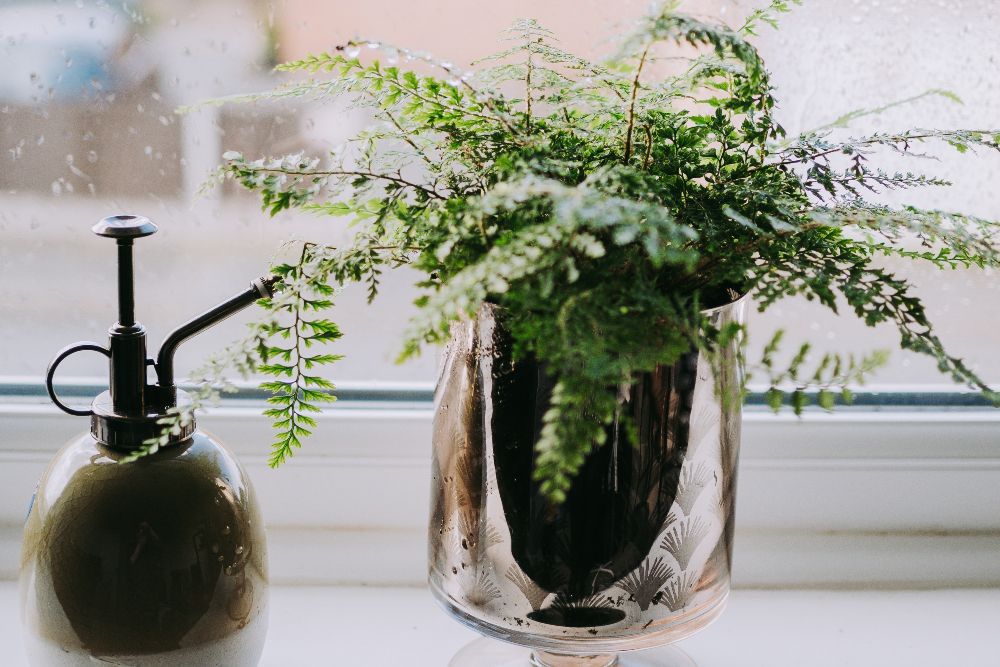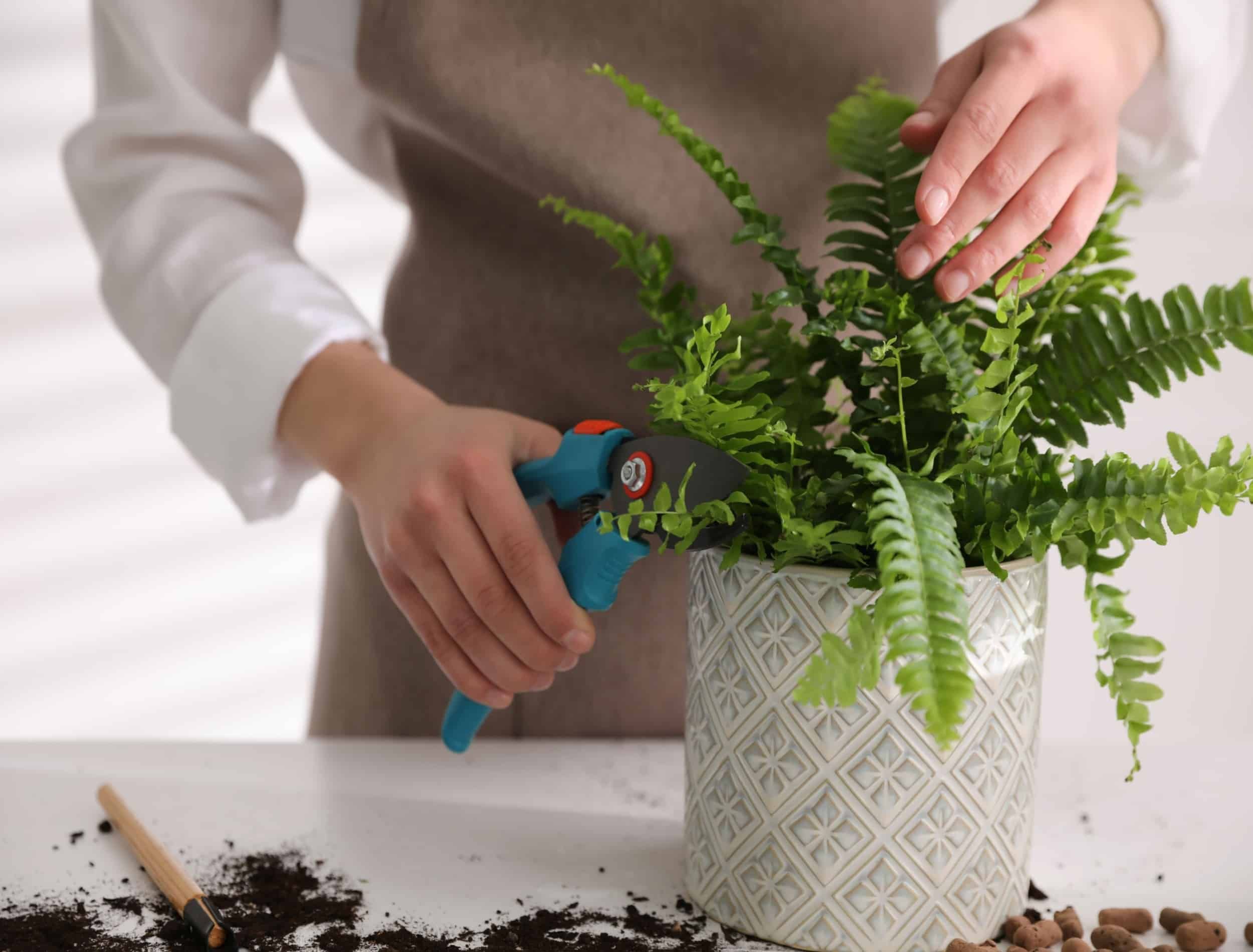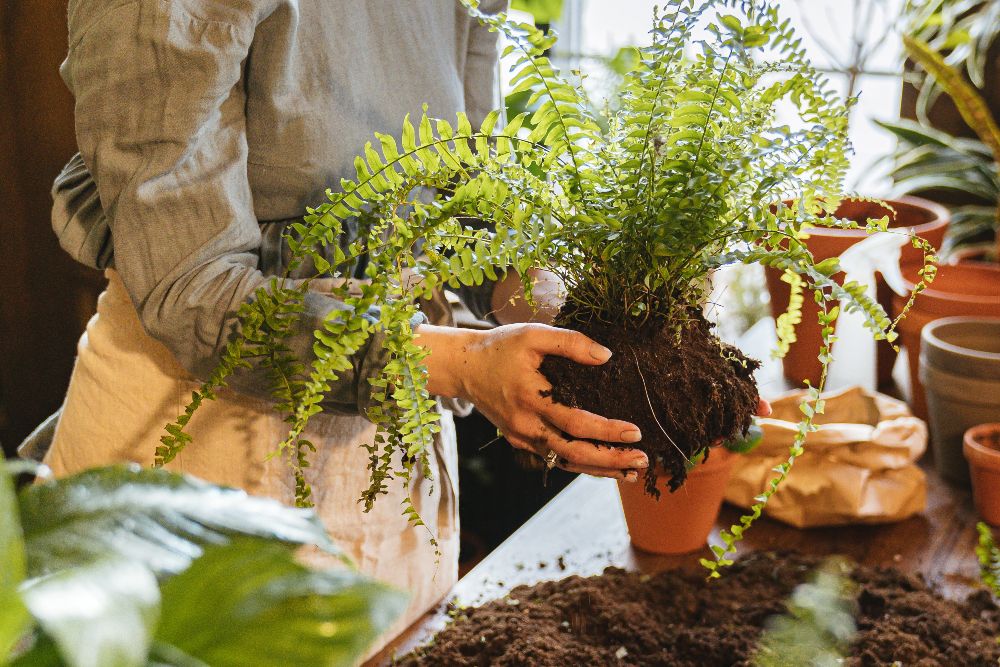The Asparagus fern (Asparagus densiflorus) is a feathery plant perfect for home décor or adding texture to a landscape. It is a tender perennial with bright green, fluffy foliage that fans out from the center and cascades down beautifully.
The many benefits of this fern include a competent indoor air purifier and a great companion plant. If you are wondering about the best care tips for your soft, fuzzy green friend, keep reading to know what makes the plant happy and what makes its leaves turn yellow.
1. Water With Care
Image credits: SaskiaAcht via Shutterstock
Asparagus fern is a drought-tolerant plant once established since it has strong, tubular roots capable of holding water. Hence, allow the soil to dry between watering sessions to prevent root rot.
To determine whether your plant is ready for watering, check if the top 1 or 2 inches of the soil are dry using a chopstick. If dry, water thoroughly until it trickles from the bottom holes, and discard the accumulated water to prevent the plant from standing in water.
Usually, it needs a drink once a week, but if your home is warmer and drier, you may need to water it more frequently. Hence, take the cues from your plant. If the plant's fronds are turning brown and drooping, it's an indication that you are not watering it enough. On the other hand, leaf drop occurs when they are overwatered.
Reduce the frequency once the temperatures cool down, watering the asparagus fern sparingly in winter. The plant does not go dormant in winter but prefers a resting period with reduced watering. Thus, keep the soil dry to the touch during this period.
How to Check for Soil Dryness
You can use your finger or a chopstick to determine the soil's moisture level. Insert the chopstick in the soil and pull it out slowly. The soil is moist if some soil sticks to the chopstick, and it is dry if the chopstick comes out clean.
2. Keep Your Plant in a Bright Spot
Image credits: aliona zueva via Pexels
Since the plant grows on the ground in its natural habitat, it is used to receiving filtered light from the tree canopy. You can emulate similar light conditions by placing your plant in a bright spot with indirect light.
If you notice the fronds turning yellow, your plant may be exposed to excessive direct light. Hence, move the plant further away from the bright window.
3. Fertilize for Foliage
Image credits: keadtisuk poonyaprayour via Shutterstock
Asparagus ferns appreciate soil rich in organic matter. As the growing season begins in spring, feed the plant using liquid or water-soluble all-purpose fertilizer at half strength. Timely feeding according to the season promotes new growth and encourages lush, bushy foliage. Fertilizing monthly in spring and weekly in summer will help your plant thrive. With that in mind, be sure to stop feeding the plant in winter.
4. Pay Attention to the soil
Image credits: Teona Swift via Pexels
Asparagus ferns grow best in well-draining, light soil, which does not hold too much moisture. During repotting, if you feel the soil you have is too heavy, mix in some peat moss or use peat-based potting soil.
5. Repot Routinely
Image credits: Antoni Shkraba via Pexels
Young asparagus ferns are fast growers that can outgrow their containers quickly. Therefore, transfer them to a larger container every couple of years for optimal growth. Use a container one to two sizes bigger than the previous pot. In the later year, repot only when you notice roots trailing from the drainage holes.
The best time for repotting asparagus fern is during spring. When repotting the plant, ensure the soil line is the same as in the old container. Press down on the soil firmly and water the freshly repotted plant.
6. Provide Humidity
Image credits: Lisa Fotios via Pexels
The plant prefers a humid environment, between 40 to 50 percent, so take the proper measures to fulfill its humidity needs and keep it happy.
You can invest in a humidifier or keep your plant on a pebble tray. Another way to provide humidity to the plant is by misting it daily or on alternate days. Aim the spray at the arching stems to allow the leaves to retain moisture.
7. Prune for Growth
Image credits: New Africa via Shutterstock
Asparagus fern can benefit from trimming, as it stimulates growth and makes your plant bushier. To encourage denser foliage, pinch individual stems during the growing season. You can also cut older stems at the base to stimulate the plant to grow fresh stems.
Moreover, remove any yellow or brown foliage to prevent the plant's resources from wasting energy trying to fix the dead fronds. Another reason to trim your plant can be to make it look neat and well-shaped. Similarly, how often you prune your plant is entirely up to you. You can trim it often to make it bushy or allow it to grow freely.
Finally, indoor Asparagus ferns are perennials, so you can trim them any time of the year. However, plants grown outdoors can benefit from pruning in late fall or early spring to encourage new growth in spring.
8. Propagating the Plant
Image credits: Antoni Shkraba via Pexels
When it comes to asparagus ferns you can fill your home with these fuzzy little plants by propagating the ferns. You can either propagate them through division or grow them from seeds.
To propagate throw division, lift the plant from its pot and gently remove the soil around the roots. Find any shoots with a healthy root system intact and gently untangle and separate them from the main root ball. Repot the new plant in a separate clean container and water it generously.
To grow from seeds, choose a 3-inch pot with drainage holes and fill it with a mildly acidic potting mix. Sow the seeds, moisten the soil, and keep the pot near a bright window. Seedlings will appear in three to four weeks.
Flaunt Your Ferns
Asparagus ferns are versatile plants that can add an ornamental touch to your home and make fantastic filler plants for hanging baskets and large urns. The soft, fluffy fronds bring textural uniqueness to any setting and draw the eyes with the bright green hue.
Have you ever grown asparagus ferns in your home? Share your experience and thoughts in the comments below!

